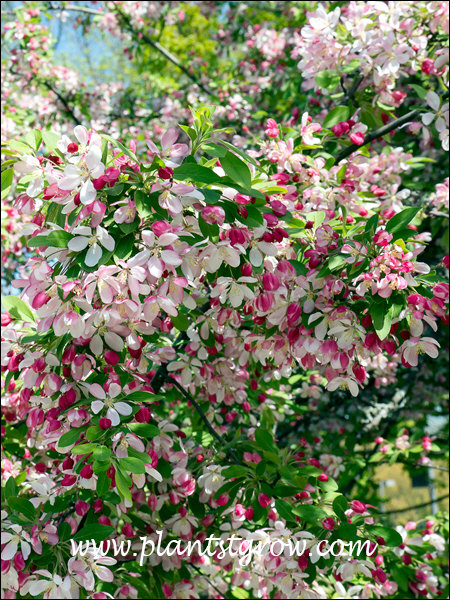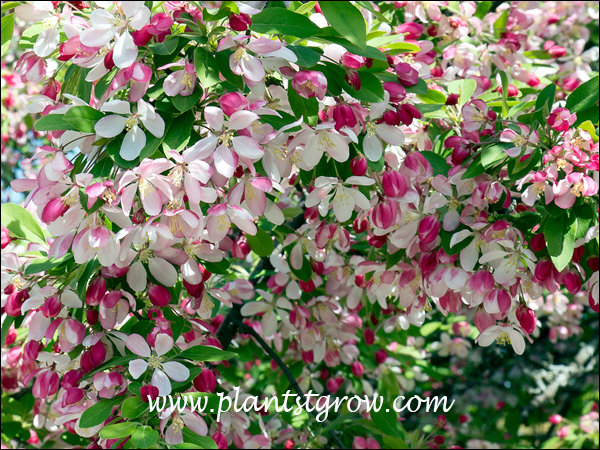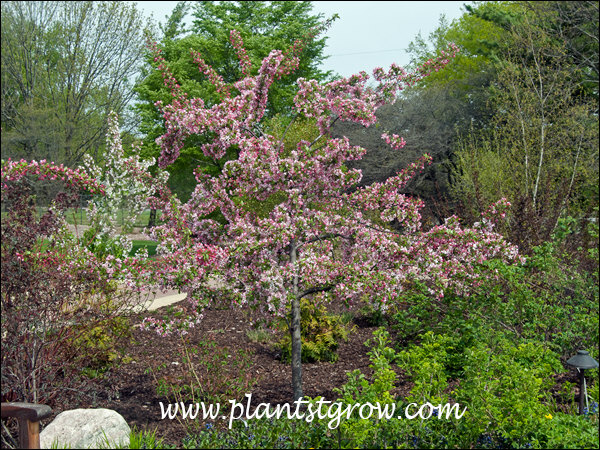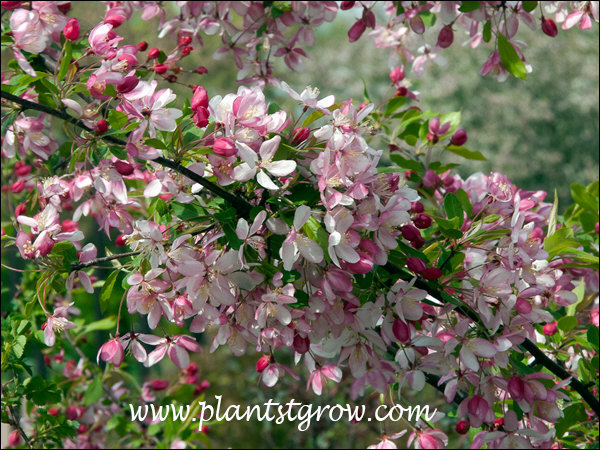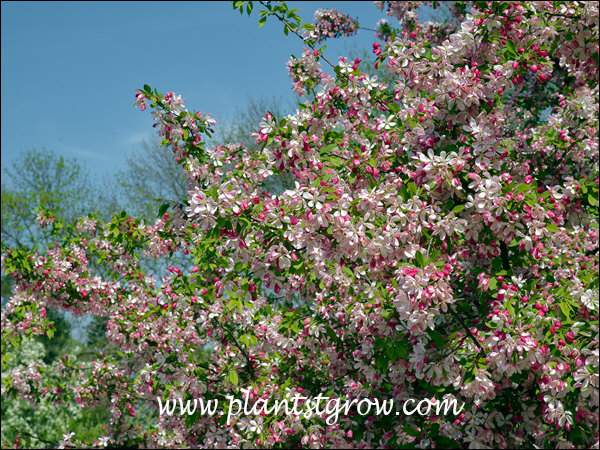| Description | One of the oldest known Flowering Ornamental Crabs still used in modern landscapes. |
|---|---|
| Pronunciation | (MA-lus)(flor-i-BUN-da) |
| Plant Type | All Plants, Trees Deciduous |
| Hardiness Zone | 4 |
| Sunlight | full |
| Moisture | average |
| Soil & Site | average |
| Flowers | red buds open to pink flower, wading to white |
| Fruit | small, yellowish with reddish blush |
| Dimensions | over 20 by 20 feet (HS), rounded wider than tall |
| Maintenance | good disease resistance |
| Propagation | seeds, grafting |
| Native Site | Believed to have originated in Japan of unknown hybrid origin. |
| Cultivar Origin | Introduced in Holland by Sieboldi in 1856, in the USA about 1862 |
| Misc Facts | Floribunda means producing an abundance of flowers. AKA: Japanese flowering crabapple, Japanese crab, purple chokeberry, or showy crabapple |
| Notes & Reference | #01-Manual of Woody Landscape Plants (Michael Dirr), #93-North American Landscape Trees (Arthur Lee Jacobson), #102-Flowering Crabs The Genus Malus (John Fiala) |

Cart
